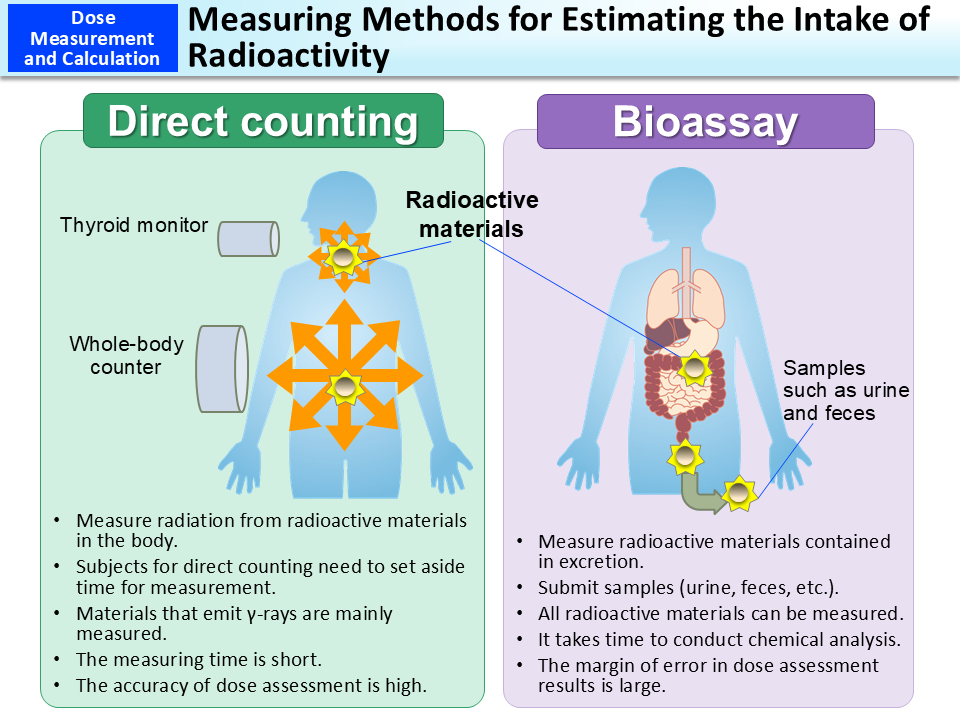Measuring Methods for Estimating the Intake of Radioactivity
Direct counting methods that directly measure γ-rays coming from within the body or bioassay methods that measure the amount of radioactive materials in samples such as urine and feces are used to estimate the intake of radioactive materials, which is required for calculating internal exposure doses.
In direct counting, the longer the measuring time, the more accurate values can be obtained. However, external measuring instruments also measure radiation from the environment while measuring radiation from the human body. Therefore, if measurements are carried out in locations at high ambient dose rates, sufficient shielding against environmental radiation is required. These instruments cannot measure radioactive materials that do not emit γ-rays or X-rays.
Bioassays can measure all kinds of radioactive materials but cannot provide accurate numerical values based on a single sampling. Therefore, it is necessary to collect samples for several days (urine, feces, etc.). Given that the amounts of radioactive materials excreted varies depending on individuals, their health conditions and amounts of food consumption, the margin of error is considered to be larger than that by direct counting.
Based on the results obtained using these methods, intake scenario (i.e., such as date of intake, acute or chronic intake, chemical form or particulate size, route of intake etc.) is taken into consideration and mathematical models (p.55 of Vol. 1, “Calculation of Internal Exposure Doses”) are used to calculate the percentages of radioactive materials remaining in the body or excreting into the samples measured to determine the intake of radionuclides. In both methods, if an exposure scenario is not certain, calculation results will have a larger margin of error.
- Included in this reference material on March 31, 2013
- Updated on March 31, 2021

